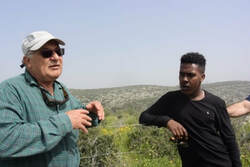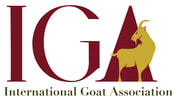 Associate Editor for Production Systems and Sustainability Born in 1956, Jean-Paul Dubeuf obtained in 1977, an "Ingénieur Agronome" Degree in Animal Production and, in 1978, a Masters (Advanced Study Degree - DEA) in Economic Analysis. Jean-Paul DUBEUF is a researcher ("Ingénieur de Recherches") at the French National Institute in Agricultural Research (INRA) in “Science for Action and Development,” in Corte (Corsica). For more than twenty years, he has specialized in the development processes of Small Ruminant (SR) with a special focus on the Mediterranean Area. His recent works have included Social and Environmental Issues, and Societal Changes in the Sustainable Development of SR Production Systems, and Pastoralism and Ecological Transitions. He is studying the implementation of public policies for these activities in several projects at International (with IFAD), National (Morocco) and Regional (Corsica) levels. He has published several applied research articles, review articles and position papers on these themes. Jean-Paul Dubeuf also developed an expertise on the conception and development of an Information System online for the animal production sectors (data basis, documentation, workflow, synthetic analysis) as the Scientific Director of the International Resource Center on Sheep and Goats Dairy sectors (CIRVAL) from 1995 to 2007. He animated and coordinated several Mediterranean scientific sub-networks (FAO/CIHEAM, International Dairy Federation) and projects. From 1984 to 1994, he was an Expert and Consultant to support decision-making activities and extension in the dairy co-operative sector in Central France for the Technical Bureau in Dairy Promotion (BTPL). Jean-Paul is an IGA member and was President of IGA from 2008 to 2012.
0 Comments
 Associate Editor for Hair and Wool Bruce McGregor has devoted his life to animals, environmental management and community organizations. Bruce has training in agriculture, land management, wool science, textiles and organization leadership. He has investigated animal production systems in advanced technology societies and subsistence transhumance societies including products from superfine Merino sheep, Angora goats, cashmere goats, alpacas, and other animals. His initial focus was on the effects of nutrition management on wool and meat production. His extensive collaborations include animal health, genetic improvement, animal welfare, and new industry development. Bruce’s work included substantial efforts in farmer extension training in new industries to translate research findings into practical outcomes. His industry research evolved to include the fundamental drivers of enterprise profitability and animal fiber physical properties. Postgraduate training and subsequent research investigated the role of wool and cashmere fiber quality on textile processing, textile product quality and human sensorial assessment of wool knitwear. Since 1992, Bruce has been a reviewer, a member of the Editorial Advisory Committee and an Associate Editor with Small Ruminant Research. He is the author of over 600 research, technical and advisory publications. He is a long-term member of the International Goat Association and has attended 8 of their International Conferences. Bruce is an IGA member and former member of the Board of Directors. January 2019 report Written by S.Y. Landau, Editor-in-Chief, Small Ruminant Research (Elsevier) Small Ruminant Research (SRR) is the official journal of the International Goat Association (IGA). Good science, relevance to small ruminant farming, and novelty are the major criteria of publication of our journal. Maintaining the quality of English is an ever-lasting challenge, as the majority of our contributors, reviewers and associate editors are not native English speakers. Mrs. Tova Deutch surveyed the 1618 published papers from the last 6 years to identify strengths and weaknesses. The results are presented HERE (for IGA members only). Want to keep reading? Become an IGA member! You can join online through the IGA Store or email [email protected]  S. Y. Landau earned his B.Sc., M.Sc., and Ph.D. titles at the Faculty of Agriculture of the Hebrew University (Rehovot, Israel). He served as a nutritionist with the Sheep and Goats division of the Extension Service, Ministry of Agriculture (1978-1996) and in 1996, after a post-doc at West Virginia University (Morgantown, WV), he joined the Department of Natural Resources of the Agricultural Research Organization (ARO, the Volcani Center). Yan has spent sabbatical leaves at Utah State University (Logan, UT) and at CIRAD (St Pierre, La Reunion). His research interests are the nutrition of free-ranging domestic and wild herbivores, near-infrared spectrometry (NIRS) in agricultural and food sciences, plant secondary metabolites, self-medication in grazing animals, and integrated rain-fed semi-arid production systems. He was the founder (2012) and leader of the joint-venture of ARO and the Edmond de Rothschild Natural Park, termed “GoatWise” on all aspects of goat grazing in Mediterranean woodland. He was the recipient of grants from national (Ministries of Agriculture, Health, Environmental Quality, Commerce and Industry) and international (US: BARD, IALC, and MERC; France-Israel) sources of funding. He tutored 18 M.Sc. and Ph.D. students, authored or co-authored 88 papers in refereed literature, 15 book chapters, more than 60 popular articles and 120 papers and abstracts in symposia proceedings. He has served as Associate Editor for Nutrition for two terms and been nominated Editor-in-Chief of Small Ruminant Research (Elsevier) in 2016. Yan is an IGA member and serves on the Board of Directors.  That Sheep May Safely Graze is written by David Sherman, former Editor-in-Chief of Small Ruminant Research, 2001-2005. Veterinarian and global goat health expert David Sherman shares his big-picture view of the development challenges in Afghanistan based on his years of living there. He illustrates the importance of animal health, often overlooked by development experts, so readers can appreciate how healthy sheep and goats provide livelihoods for rural people, food for hungry cities, and wool for beautiful carpets. The book contains numerous short and charming vignettes that vary from quiet delight in small farm life to portraits of fascinating individuals to frustration with ever-changing political agendas. Most importantly, David invites readers to see the dignity and humanity in his Afghan colleagues and ordinary villagers. Western development aid has resulted in too few successes, but this highly readable account of Afghanistan’s veterinary field unit project is a “how-to” of effective assistance that improves the lives of animals and the people who depend on them. Beth A. Miller President, International Goat Association This book will be released on March 15, 2019, but it is available to pre-order from Amazon in paperback or Kindle editions. The bacterium Lactobacillus rhamnosus EM 1107, used in the production of goat milk cheese, was able to survive the digestive process and to control intestinal inflammatory responses. This was the research carried out at the Federal University of Paraíba (UFPB) in partnership with Embrapa and published in the Journal of Functional Foods.
The microorganism is one of the isolates of dairy products of the Caatinga that are studied by Embrapa Goats and Sheep (EC) and partner institutions to be ingredients of dairy products beneficial to health. Among them, a 100% national goat cheese that will have this bacterium in its composition and that is already being tested in the dairy of the Carnaúba Farm, in Taperoá, Paraíba. READ MORE… A bactéria Lactobacillus rhamnosus EM 1107, empregada na produção de queijo de leite de cabra, apresentou capacidade de sobreviver ao processo digestivo e controlar respostas inflamatórias intestinais. Foi o que mostrou pesquisa executada na Universidade Federal da Paraíba (UFPB) em parceria com a Embrapa e publicada na revista Journal of Functional Foods.
O microrganismo é um dos isolados de produtos lácteos da Caatinga que são estudados pela Embrapa Caprinos e Ovinos (CE) e instituições parceiras para serem ingredientes de produtos lácteos benéficos à saúde. Entre eles, um queijo caprino 100% nacional que terá essa bactéria em sua composição e que já está sendo testado no laticínio da Fazenda Carnaúba, em Taperoá, na Paraíba. CONSULTE MAIS INFORMAÇÃO… |
IGA Blog
The International Goat Association promotes goat research and development for the benefit of humankind, to alleviate poverty, to promote prosperity and to improve the quality of life. Archives
May 2024
Categories
All
|
|
International Goat Association
2516 Millbrook Rd., Little Rock, AR72227 USA email: [email protected] -454-1641 |

 RSS Feed
RSS Feed